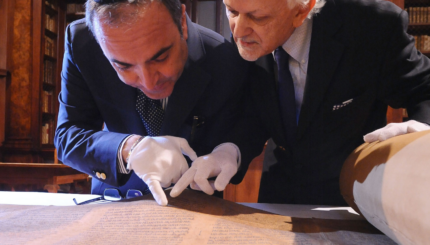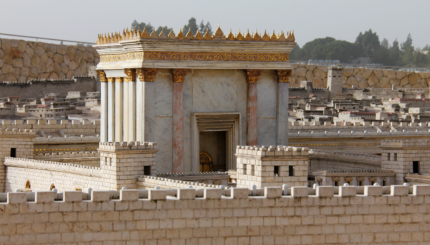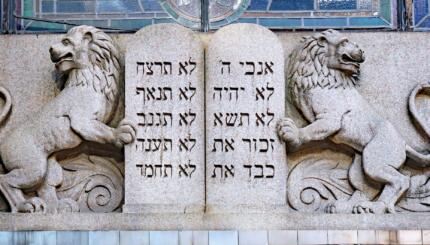Contemporary feminism has been, arguably, the primary influence upon the recent flourishing of new rituals and the transformation of older ones. While concerns about sexism and women’s exclusion often critique tradition, they can also lead to a more fully developed tradition with which more people feel more comfortable engaging–and, many claim, which helps Jewish tradition itself reach its potential for sanctity.
On the other hand, for traditionalist Jews, the development of new approaches to ritual can be highly problematic, raising concerns about:
· whether it is appropriate to create ceremonies not established by sages of a previous era;
· using the classical blessing format (“Barukh atah–Blessed are You, God…”) and other liturgical forms too casually;

Help us keep Jewish knowledge accessible to millions of people around the world.
Your donation to My Jewish Learning fuels endless journeys of Jewish discovery. With your help, My Jewish Learning can continue to provide nonstop opportunities for learning, connection and growth.
 · whether new rituals are excessively focused on bodily changes and on the individual rather than new communal status; and
· whether new rituals are excessively focused on bodily changes and on the individual rather than new communal status; and
· the appropriate balance between contemporary insights and longstanding tradition.
For some Jews of many types, this balancing act is at the core of their religious lives and professional work. Rabbi Laura Geller, one of the first female Reform rabbis, tells a story from rabbinical school, when an instructor noted that “there is no important moment in the life of a Jew” for which Jewish tradition doesn’t have a blessing or ritual. Her teacher’s confident declaration stimulated her to think about the moments in our lives–particularly in the lives of women–for which she did not know of a Jewish rite of passage. Regarding her quest to create or revive Jewish lifecycle traditions beyond brit milah, bar/bat mitzvah, marriage, and death, Geller writes: “I discovered sources and stories that helped me both remember and invent new rituals for menarche, weaning, healing, growing older, and other significant transitions” (“Being a Mezuzah,” Reform Judaism, June 2001).
Geller’s path is emblematic of the wider journey of many Jewish women, who have sought to mark important moments in their lives which have had no clear Jewish mode of sanctification. Their ongoing efforts lie not only in the creation of new rituals (imbued with traditional language and symbols) for events like weaning and menopause, but also the adaptation and transformation of existing ceremonies and events. The latter is exemplified by the differing cases of brit bat, a new covenant ceremony for girls meant to parallel brit milah for boys (and in many cases drawing on its themes), and the marriage ceremony, which in many communities has been shaped by feminist insights and egalitarian impulses.
Whether creating new rituals to mark events seemingly invisible on the Jewish life calendar, developing new ceremonies so that the lives of girls and boys may be marked with equal power, or transforming and supplementing longstanding rituals to address contemporary concerns, Jews of many stripes weave together what Geller calls “the of life” and “the Torah of tradition.”
Without the automatic imprimatur of time and tradition, new or transformed Jewish lifecycle rituals must in some ways prove themselves as authentic, homegrown, new leaves on the Jewish tree, rather than artificial grafts. Those involved in their creation have both the burden and the luxury of reflecting on what makes a ritual “work,” asking questions like:
· Does this ritual have a clear beginning, middle, and end?
· Does it draw on traditional sources and stories in a way which grounds it sufficiently?
· How does it transform existing rituals and blessings? How does the new use of these elements affect its usability by Jews who are traditional as well as those who are not?
 · What ritual objects, if any, belong as part of this ceremony?
· What ritual objects, if any, belong as part of this ceremony?
· What is the role of community in this event?
An additional issue with far-reaching consequences for Jewish lifecycle events is the Jewish status of participants. Jewish denominations have not only different approaches to non-Jews’ participation in Jewish ceremonies, but differing answers to the very question of “Who is a Jew?” Absent conversion, within Orthodox and Conservative Judaism and some Reconstructionist communities only a person born of a Jewish mother is Jewish; within most Reform and some Reconstructionist and non-denominational liberal communities, one Jewish parent of either gender and Jewish identification are sufficient. Furthermore, the movements have varying processes and standards for conversion, and more traditional rabbis do not always recognize as valid or complete conversions not done, as they see it, according to the requirements of Jewish law.
The implications for the very powerful, time-bound–and often emotional–terrain of lifecycle ceremonies are obvious. Can a Conservative rabbi officiate at the wedding of one of her congregants to the unconverted child of a non-Jewish mother and a Jewish father, raised as a strongly-identified Jew in a Reform congregation? Will a Reconstructionist rabbi require conversion or a ceremony of affirmation for a woman who just discovered that her maternal grandmother was Jewish, and wants to fully embrace her legacy with an adult bar/bat celebration?


